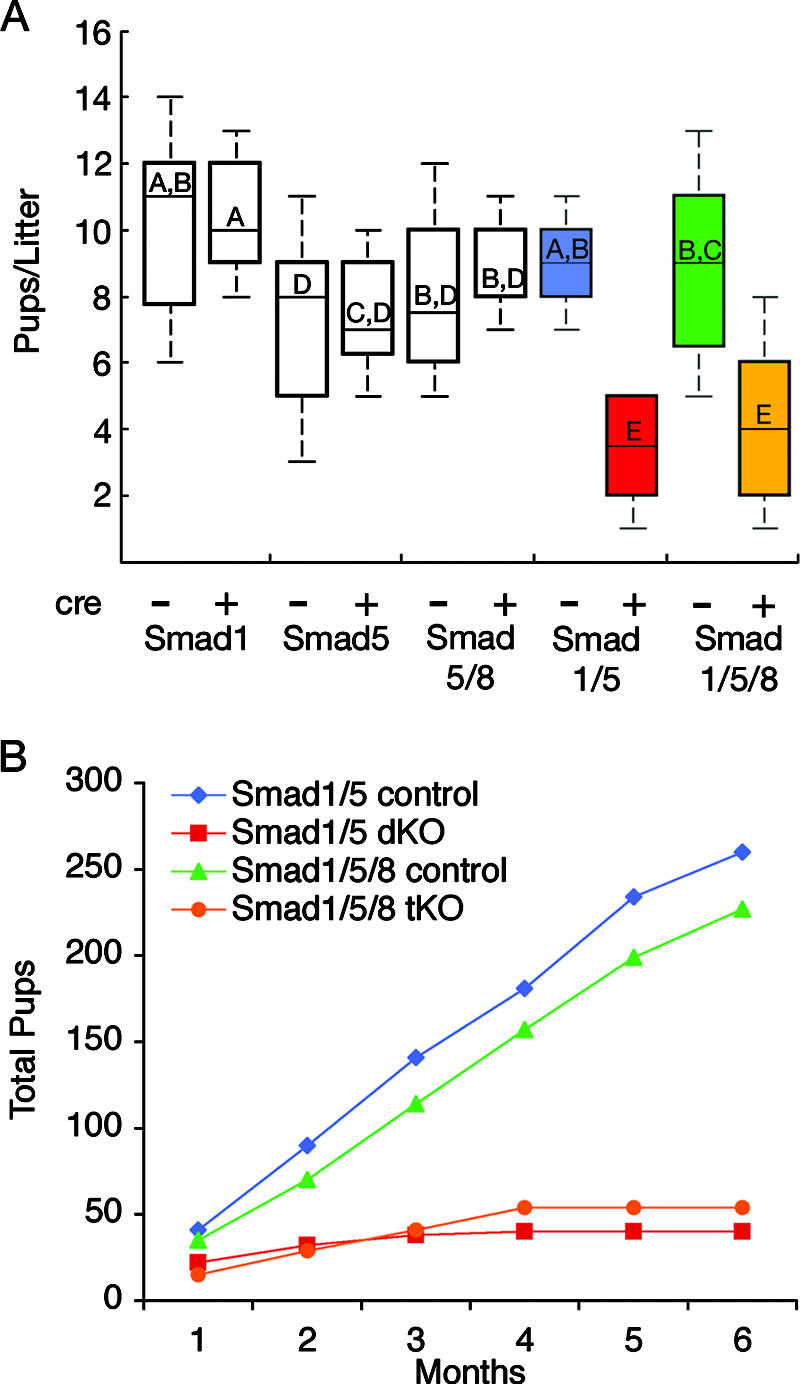FIG. 2.

Fertility analysis of Smad1, Smad5, and Smad8 female cKO mice. (A) Adult female mice of the indicated genotypes (cre negative [−] and cre positive [+]) at 6 weeks of age were bred to WT males, and the numbers of pups were recorded for 6 months. Data are shown as median pups per litter, with the upper and lower edges of the boxes equal to the 25% and 75% quartiles and whiskers the 5% and 95% quartiles. Mice with single conditional knockouts for Smad1 (cre negative, n = 5; cre positive, n = 6) or Smad5 (cre negative, n = 10; cre positive, n = 4) or dKO for Smad5 Smad8 (controls are Smad5+/− Smad8−/−, n = 4, compared to Smad5flox/− Smad8−/− Amhr2cre/+, n = 3) have litter sizes and reproductive life spans similar to those for their control littermates. Female Smad1 Smad5 dKO (cre positive, n = 6) and Smad1 Smad5 Smad8 tKO (cre positive, n = 6) mice are significantly different from their control littermates (P < 0.001) (cre negative, n = 5 and n = 6 for dKO and tKO mice, respectively). There is no statistical difference between the numbers of Smad1 Smad5 dKO and Smad1 Smad5 Smad8 tKO median pups/litter, indicating that loss of Smad8 has no additional effect on fertility. Letters written above the median line for each group indicate statistical significance by Kruskal-Wallis analysis of ranks test, followed by Tukey's post hoc test. Boxes not connected by the same letter are statistically different; for example, “A” is statistically different from “E” but not “A,B.” (B) Female Smad1 Smad5 dKO and Smad1 Smad5 Smad8 tKO mice become infertile with age. Total accumulated pups were counted from five breeding pairs for each genotype over 6 months. The dKO and tKO mice are similar in their breeding profiles. Infertility was evident in dKO and tKO mice after 3 to 4 months of breeding.
